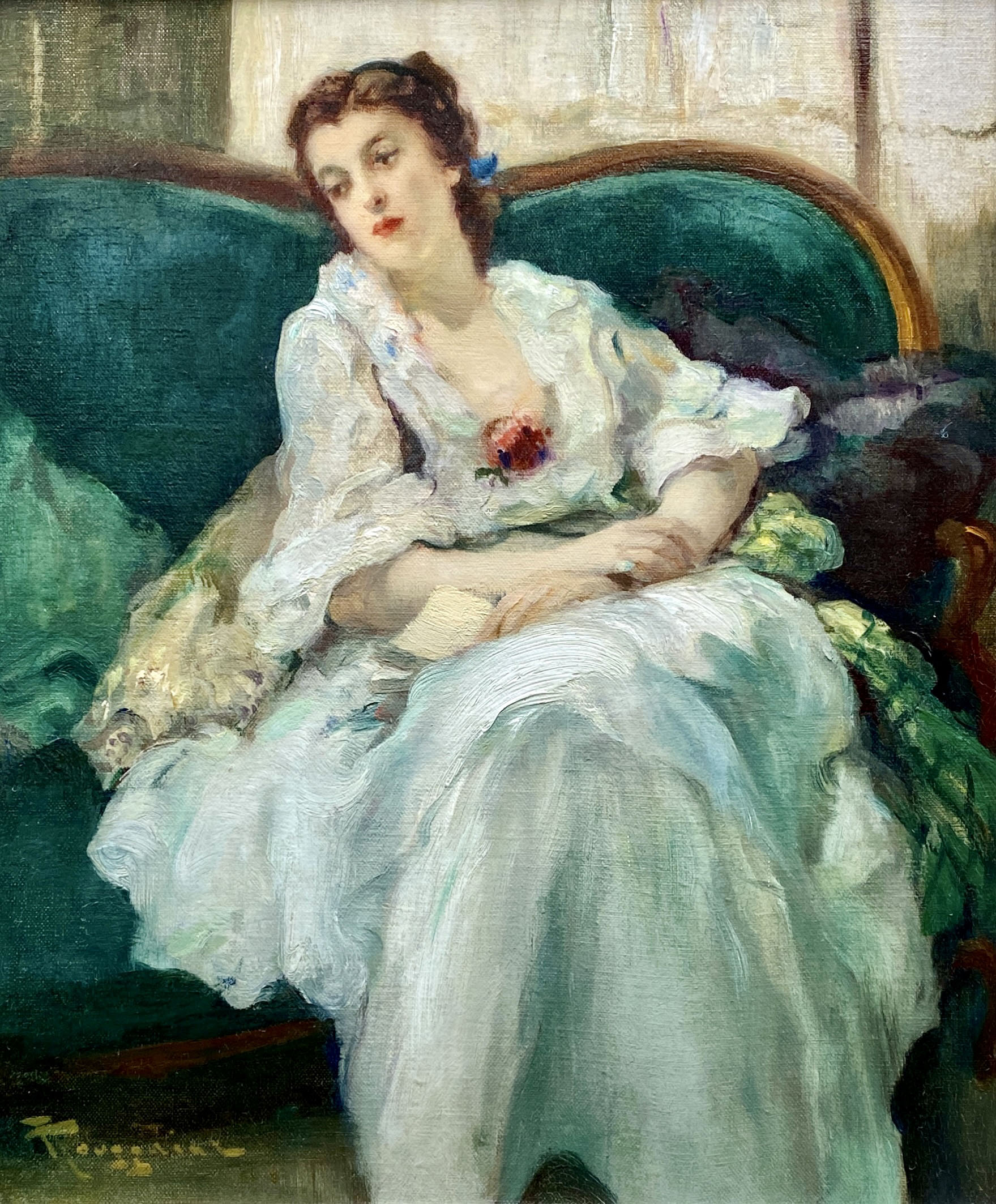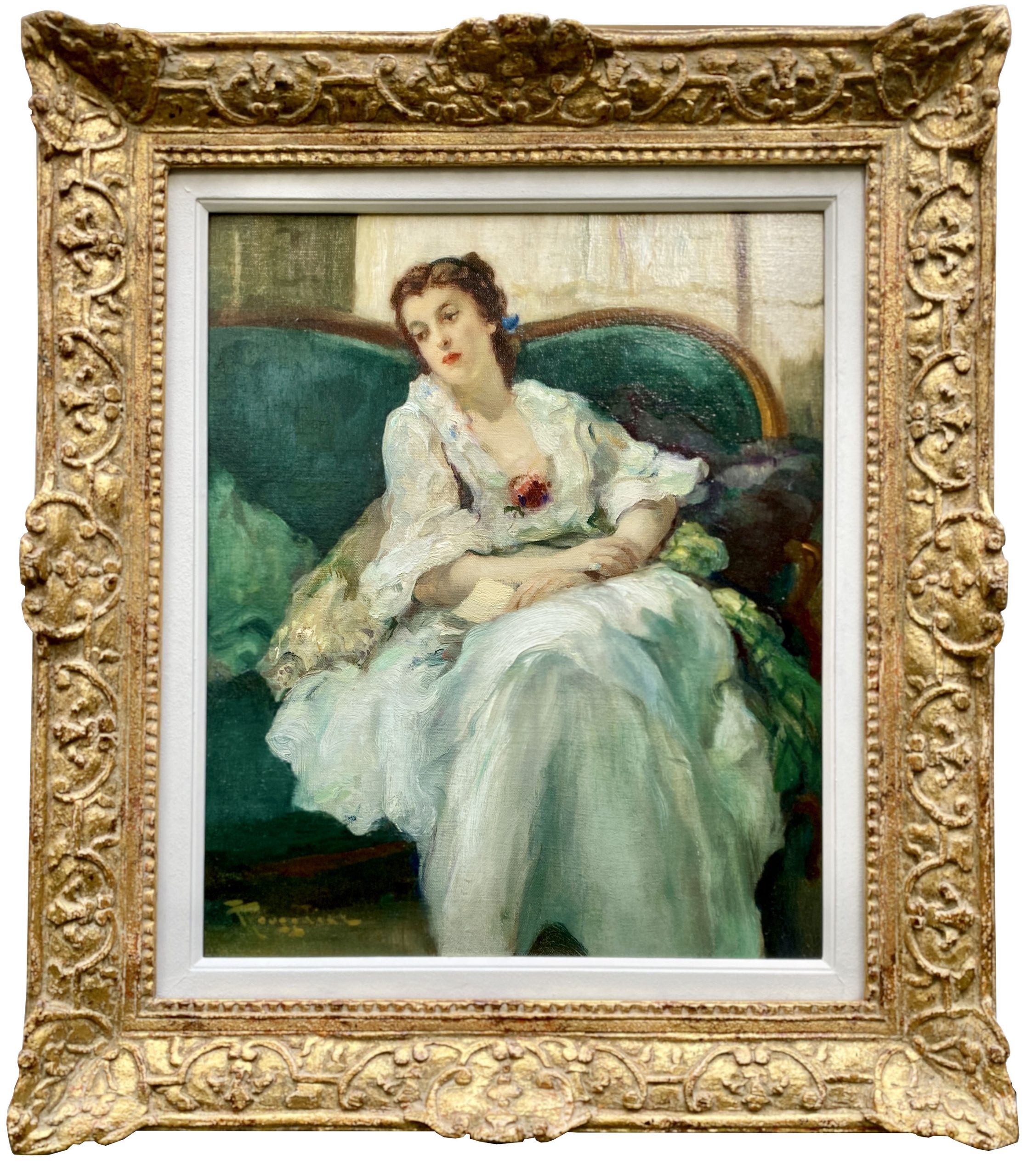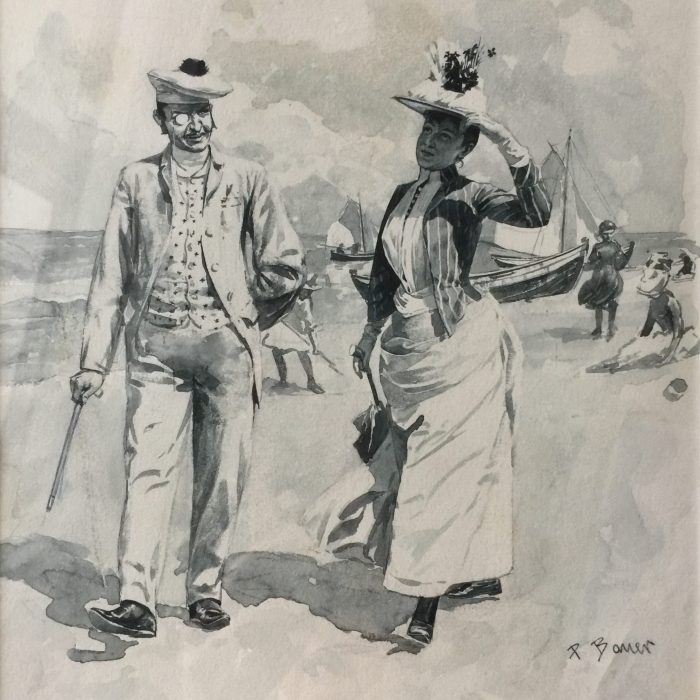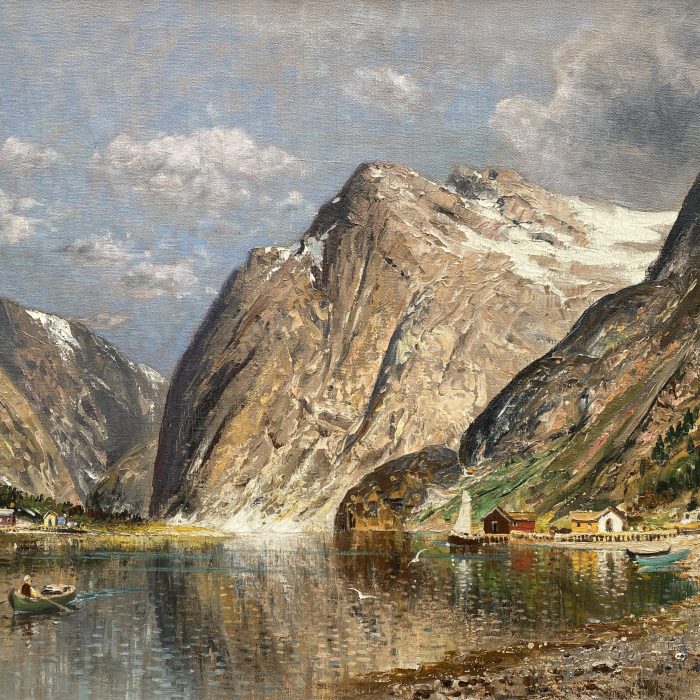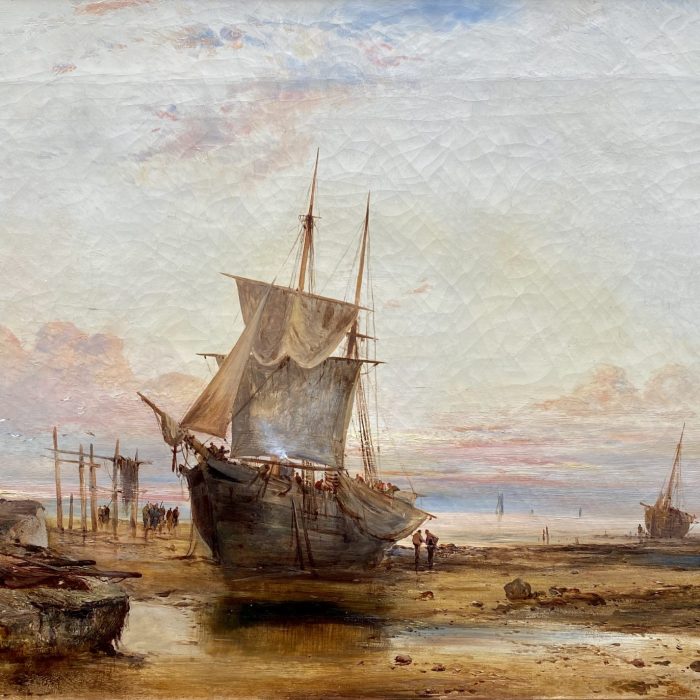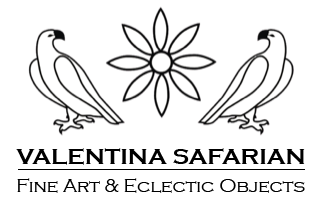Brussels 1873 – 1956
Belgian Painter
Portrait of a Lady
Toussaint Fernand emerged as an exquisite painter, a maestro of figures, feminine nudes, interiors, portraits, flowers, landscapes, and seascapes. Born in the enchanting realm of Brussels in 1873, he was destined for artistic brilliance. The tender age of fifteen saw his entrance into the hallowed halls of the Royal Academy of Fine Arts in his hometown, where his journey of creative mastery began. Under the tutelage of Jean Portaels, a visionary mentor who revered the art of drawing, Fernand’s artistic spirit ignited.
His presence graced numerous Belgian and international exhibitions, casting a spell with his artistry. Paris beckoned, and there he encountered the luminous Alfred Stevens. Guided by Stevens’ wisdom, Fernand forged his own distinct style, a tapestry woven from elegance, meticulous draftsmanship, and an unbridled impressionistic brush. The canvas became his realm for portraiture, and he made a resplendent mark at the Salon des Artistes Français, clinching a third-class medal. Ambassadors and illustrious figures such as King Leopold II and Cardinal Micara found their essence captured in his portraits.
Galleries in Brussels and the esteemed Société des artistes Français bore witness to his brilliance, bestowing upon him medals in 1901 and 1929. His victorious creation graced the pages of the influential Parisian publication, L’Illustration. Echoing through the corridors of artistic critique, Lucien Solvay declared Fernand a painter of unimpeachable integrity, endowed with profound knowledge. In 1929, the discerning eyes of art critic Mario de Marchi pronounced Fernand the unchallenged master of feminine grace and allure.
His canvases are beguiling, each stroke of his technique imbued with a symphony of colors and ingenuity. Fernand Toussaint bestowed life upon the quintessential 19th-century salon paintings, their contours echoing with the influence of Manet and the Impressionists, an effervescent dance between landscapes and figures. His brushwork was opulent, sketching profiles with a richness that evoked a sense of the ethereal. Within his works, a harmonious interplay of elements wove a tapestry of romance and aristocracy, a realm both refined and veiled in a delicate mist.
His art exhaled the very essence of French Impressionism while honoring the legacy of English portraiture. A master of profound sensitivity, Fernand breathed life into the feminine form, capturing its essence with a reverence that knew no bounds. His oeuvre stands as an eloquent testimony to an era when the allure and modesty of women were exalted. Even in the realm of delicate nudes, he summoned endless respect with each brushstroke.
In 1956, Fernand’s earthly chapter concluded, leaving behind a legacy that continues to resonate. Today, his works are revered treasures, cherished by art connoisseurs across the globe. Museums such as the Musée Charlier in Brussels, Museé Ixelles, and the Antwerp Vleeshuis house his enchanting creations, each stroke a testament to a world where beauty and grace were celebrated in hues and textures that only his hand could conjure.

